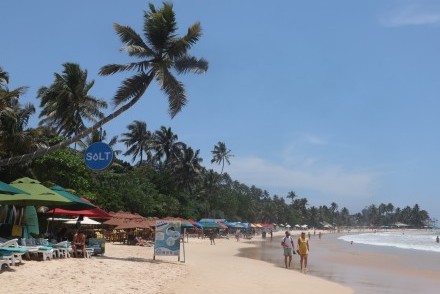TikaWeeks #21/2025: Sri Lanka update
Posted by John on 19th May 2025

We believe that tourism can benefit both visitors and locals alike, a positive force for the national economies and local communities of the destination country. However, we also appreciate that overtourism has detrimental impacts and tourist income doesn’t always go into the pockets of the people who provide the services or need it most. Recent feedback from customers has highlighted some of these issues, particularly the number of visitors and jeeps in Yala National Park and overdevelopment in certain regions of the coast. We are well aware of these concerns and are finding new locations to visit and different places to stay to ensure your experience of Sri Lanka remains enjoyable and authentic.
Overtourism has been rearing its ugly head across many regions of the globe for some time now but thankfully it is a relatively new phenomenon in Sri Lanka. It is unsurprising that Sri Lanka is finally getting the attention it deserves, rightfully called “undoubtedly the finest island of its size in the world” by Marco Polo well over 700 years ago. Culturally rich and environmentally diverse, Sri Lanka boasts eight World Heritage Sites (the oldest dating back to the 3rd century BCE), 86 species of mammals (including elephants and leopards), more than 500 bird species (including 33 endemics), a colourful array of flowering plants and trees, a Hill Country famous for tea and trekking, 14 National Parks out of 100 areas protected by the government, and 1600 km of Indian Ocean coastline offering palm-fringed and sun-drenched tropical beaches.
The overcrowding in Yala National Park together with the poor behaviour of some safari providers and visitors there is making the experience intolerable for many of our wildlife enthusiasts. Instead, we are recommending visits to other national parks in the south.
- Bundala is the first Ramsar site – wetlands of international importance – in Sri Lanka and one of its principal bird sanctuaries, which is sited just to the west of Yala on the south coast.
- Kumana, formerly known as Yala East National Park, sits on the northeastern borders of Yala (West) National Park and despite the reserve offering the same wildlife spotting opportunities as its illustrious neighbour, it remains tranquil and a joy to visit – for the moment.
- Lunugamvehera, also called Yala (Blocks 5 & 6), is accessed from the main road from the Hill Country to the south coast just north of Yala. Again, it is much quieter and offers a better experience than the main blocks of Yala, particularly Block 1, which is the most visited area.
- Udawalawe is the island’s main elephant reserve, one and a half to two hours’ drive inland from the beaches of the south coast. More like an African savanna, the park is also home to many other mammals as well as a plethora of bird species.
Signage in foreign scripts rather than the national languages of the country is confirmation that tourism is becoming uncontrolled and unfettered. Such signage is popping up in beach areas around Arugam Bay in the east and Unawatuna on the south coast, unfortunately, both of which have gone the same way as frontrunner Hikkaduwa on the island’s southwest coast many years ago. Even Ella, once a delightful backwater in the southern Hill Country, now has a backpacker strip and an overly congested centre. So, where to next?
Far from damning the locations cited above, we still recommend stays in these areas but not in the main centres or at the standard hotels or guesthouses on offer. We still prefer the quieter beaches around Tangalle on the south coast, and the more upmarket, stand-alone properties along the western shores. In the east, outside of Arugam Bay is fine, as are the northern reaches of the Nilaveli area further north, while Passikudah halfway between the two is a dedicated beach resort zone with some exquisite hotels right on the bay as well as further south at Kalkudah.
What we do not want is Sri Lanka to become the next Bali.
Categories: Accommodation, News, Sightseeing, Sri Lanka, Sustainability, Travel tips, Wildlife
« All articles




